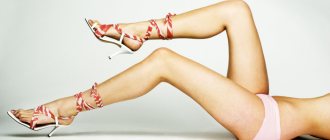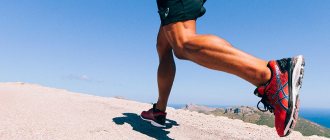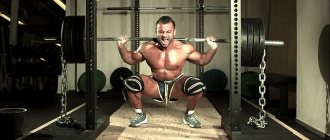Why do you need to run with weights?
In 2002, scientists at Texas Tech University conducted a series of studies aimed at determining the effectiveness of weighting materials. The subject of the research was a local football team. For 6 weeks, the players performed traditional exercises to develop endurance and explosiveness. At the same time, part of the team used weight vests.
Having compared the results of both groups, scientists made a clear conclusion. The entire team improved their performance in the long and high jumps, as well as in the sprint run to 36.5 meters. However, the performance of the group that trained with weights increased significantly compared to the second group of players.
Increasing your own weight with weights makes you put more effort into running. As a result:
- Ligaments and tendons are strengthened
- Muscle mass increases
- Increases the force of the push when jumping
- Increases body endurance
- More calories burned
Research from the American Council on Exercise supports the use of lightweight weights. For example, running with 0.5-1 kg arm cuffs or 0.7-1.3 kg leg cuffs increases your heart rate by at least 10 beats per minute. At the same time, the level of oxygen consumption increases by 5-15%. This has a positive effect on the cardiovascular and respiratory systems.
Hand weights
It’s worth noting right away that this is the most difficult method presented, and therefore you will need to try. It is advisable to have a sewing machine at home, because this will speed up the process significantly. But you can do everything with your hands.
To make your own weighting materials, you need to use the following materials:
- Four pieces of fabric. Nylon or cotton will do. The length should be 33 cm and the width 13 cm.
- The strap is 91 cm long and 2.5 cm wide.
- Rectangle or ring with dimensions 2.5 by 5 cm.
- Velcro. Many people wonder how to make Velcro at home. In this regard, I would like to say that this is not such an expensive material that you would bother too much and try to make it yourself. It’s much easier and faster to go to the first clothing accessories store you come across and buy.
- Rice or sand. You can also use any other material that will be used as a filler.
It is necessary to accurately measure two piles of filling material that will be located inside. Each section that is filled to the top will ultimately give 0.5 kg of weight. The same must be done with sand if you choose such a filler. If you want to gain more weight, then you should increase the fabric width.
These things are suitable for trained athletes, but not for amateurs, and especially not for beginners. Weights worn on the ankles stretch the muscles too much, and behind them the tendons and ligaments down (and they should work evenly up and down due to muscle contractions). Microtraumas form in them - anyone who has used such weights probably remembers how the muscles of the lower leg and the Achilles tendon above the heel ache the next day after training, how wooden they are afterwards! Over time, chronic injury occurs and the inflammatory process begins.
It’s the same story with weights on your arms (bracelets). In addition, excess weight on the wrists with extended muscles (when the arm is lowered) can displace the humerus in the joint, since at the top it does not rest on another bone, but only on the ligaments. “Walking poles will help increase the efficiency of energy consumption,” reminds Pavel Fedorova.
“The use of weights on the arms and legs leads to stress problems in the ankle, hip and knee joints, as well as in the lumbar region,” explains Elizaveta Karpinskaya. - Posture is impaired. It’s safer to put weights in your backpack; this additional load increases your heart rate and the number of calories burned. But the total weight of the weights should not exceed 10% of body weight.”
Types of weights
Weights for running are divided into the following categories:
- Type – bulk and plate
- Weight – up to 1 kg, from 1 kg to 2.5 kg, over 2.5 kg
- Type – weights for arms, legs, vest, belt, backpack.
Plate weights
Plate weights are cuffs, belts or vests with pockets for metal plates. Their advantage is that the weight can be changed at will by adding or removing plates. Such weighting agents are stronger and more durable compared to bulk ones, however, their price is much higher.
Bulk weights
Bulk weights consist of dense fabric filled with sand or earth. They are cheaper than plate ones and are suitable for beginners as trial ones. However, their main drawback is that the weight cannot be adjusted. As some athletes note, such weights are short-lived, since the fabric begins to wear out and the sand spills out.
Hand weights come in the form of bracelets and dumbbells.
Hand bracelets
Bracelets are made of elastic or rubberized fabric. Cuffs made from thin knitwear are not durable. Their width is usually 10-15 cm, the length is adjustable with Velcro. The weight of such weights can vary from 0.5 to 5 kg.
Dumbbells
You can also use regular dumbbells or dumbbells with a special wrist mount as weights. The weight of the device should be comfortable for the runner.
Additional weight in the hands shifts the athlete's center of gravity, as a result of which the load is redistributed to other muscles. Running with dumbbells in your hands increases the load on the biceps, as well as the trapezius and deltoid muscles.
Bracelets and dumbbells increase the load on all muscle groups. But after training, the athlete usually feels more tired in the shoulder girdle, arms and upper back.
Running with a load on your arms will be useful for those who want to increase the load specifically on their arms, and also practice boxing or other martial arts. Runners with back or joint problems should limit themselves to jogging without weights.
Ankle weights
Leg weights differ from arm cuffs only in the length and width of the band. They fit over the ankle just above the shoe and fit securely on the foot. Be careful not to let the foot weight rub or slide on your ankle.
Running with weights on your legs works the soleus, gastrocnemius, and ankle muscles. Unlike a vest, leg cuffs reduce the load on the spine while working the columnar spinal muscles. This type of training also involves the rectus and oblique abdominal muscles.
Weight vest
It is worn on the upper body and resembles a bulletproof vest with many pockets for plates. The weight of the vest is adjusted depending on the type of training and the tasks that the athlete sets for himself. If you need to do endurance training, the optimal weight is 2.2 kg.
When starting to run with weights, it is better to start with equipment whose weight exceeds the athlete’s own weight by no more than 5%. By increasing the load gradually, you will avoid injuries to bones and tendons.
Belt - weighted
A belt is another type of weighting material, a lightweight version of a vest. The belt is securely fixed at the waist using a belt and does not hinder the athlete’s movements. Running with a belt allows you to pump up the muscles of your legs, abdomen, buttocks and lower back. Recommendations for choosing the optimal weight are the same as when choosing a vest.
Backpack as a weighting agent
Most often, a backpack is used as weighting material by marathon runners and other long-distance runners. The sports backpack is secured using adjustable chest and waist fastenings. Vests and backpacks for running have a high-quality ventilation and moisture removal system.
When choosing a backpack, pay attention to the position of the straps: they should fit the entire plane to the body, and not just one edge. The optimal weight of such a weighting material is 3 kg, that is, close to the weight of a backpack on the trail.
The benefits and harms of running with dumbbells in your hands
This type of running perfectly solves (as part of a treatment program and a method of prevention) problems that often arise in a modern lifestyle:
- carpal tunnel syndrome;
- osteochondrosis of the cervical spine;
- arthritis of the elbow joint;
- bursitis of the shoulder joint.
Running with dumbbells in your hands also has a wonderful effect on your hands - it prevents the development of arthrosis of the fingers, improves fine motor skills, increases grip strength, and relieves tension in the fingertips that arises from working at the computer for a long time.
Read: The benefits and harms of long walking
Jogging with dumbbells in your hands is considered an effective cardio workout recommended for:
- protecting the body from unfavorable ecology;
- preventing the development of heart defects;
- strengthening immunity against acute respiratory infections;
- treatment of chronic bronchitis and inhibition of the development of asthma.
It has been proven that such running reduces the sensitivity of cells to allergens from plant pollen and animal hair.
Running with dumbbells is not recommended if there is weakness and numbness in the hands of unknown etiology.
Video on the topic:
Weight of weights
Weights up to 1 kg are usually used by athletes for dynamic training. This weight is also recommended for weight loss.
Weights with an average weight of 1 to 2.5 kg are used during long runs to train endurance. Can also be used by sprinters to increase their speed capabilities.
Weights greater than 2.5 kg are typically used for jogging, treadmill and machine exercises, and additional endurance exercises. Not recommended for beginners and people with insufficient physical fitness.
Rucking: A Guide to Training with a Backpack
Running is a good workout for increasing endurance. But it’s far from the only possible one, despite the fact that some individuals will try to convince you otherwise. Cardiovascular training and preparation for the fight for survival go hand in hand.
Running by itself does not cause muscles to develop functional strength. And to be honest, it won’t really prepare you for actions in case of emergency situations. Because you need exercises that will specifically improve power, endurance, and load-carrying ability.
training with a backpack , or rucking (from English rucking), as our Western colleagues call it, is precisely such training And it doesn't even matter whether you prefer to train alone or need a partner for inspiration - training with a backpack will be effective in all of these cases.
Long before fitness enthusiasts began using weights for their exercises, soldiers carried their heavy army packs during forced marches, and tourists lugged their heavy backpacks over the mountains. And a few years ago, racking quickly burst into the life of society as another healthy lifestyle trend. Communities began to form around the world, devoting their time to walking through fields, forests and urban areas with backpacks on their backs in the name of health and fitness.
And the number of such people is still growing steadily, including due to ordinary fans of a healthy lifestyle, who are gradually abandoning running in favor of workouts that bring much more benefits.
The content of the article
The science behind raking
Walking burns more calories than sitting still. Running burns more calories than walking. And racing burns even more, almost three times as much as running.
Why? By throwing the backpack on your back, you get a uniform increase in the load on your shoulders and body. And as the weight that you have to carry on your legs increases, the work that your muscles must do to move increases, as does the cardiovascular system in order to provide the muscles with an adequate supply of oxygen.
There are differing opinions on exactly how long a minimum workout should last. But most agree that there is no point in exercising for less than 30 minutes. In addition, the majority agree that rucking puts much less stress on the tendons and joints than running, so you can devote much more time to it without fear of damaging yourself.
In addition, citizens who are unable to run for all 30 minutes due to weak breathing confirm that racking is much easier. And seasoned runners confirm that the next day after such a workout they felt noticeably better. And they recognized that the body endures the loads that arise during rucking much more efficiently. Even those muscle groups that hardly work when running were involved, because holding excess weight requires coordinated work of the muscles of the torso and upper legs.
Types of special training with a backpack
Basic raking
In principle, absolutely any weight will do. But professionals, especially during competitions or training sessions, prefer to use either special bricks wrapped in adhesive tape or sandbags. With their help, it’s quite easy to adjust the weight, and you don’t have to worry about them staining your backpack. But, as already said, any weight will do, although such people are called “raw dogs” and are looked at somewhat condescendingly. Well, let it be, actually.
Wrap duct tape around the bricks to prevent damage to the backpack.
For official events, citizens weighing less than 150 pounds (about 68 kg) are required to take 4 standard bricks, and those who weigh more - 6. If we are talking about individual training that is not tied to the competitive moment, it is considered good form to take weights from 10 to 20 percent of its own weight. And for the truly “frostbitten”, you can take with you real plates of body armor and containers with cartridges (without cartridges, of course, but with identical weight), so that they can fully experience what awaits them if an emergency situation occurs in a combat situation.
Team racking
The main benefit of this type of training is motivation from other people. As well as motivation on the part of the instructor. And all this forces a person to act outside of his comfortable operating mode, overcoming pain and fatigue. And all because the speed of a group of such athletes is determined by the speed of its slowest member. In addition, such training lasts much longer than individual ones - from several hours to several days, depending on the level of training of the participants.
But if you don’t want to interact with a large number of people, then no one is stopping you from coordinating with another rucking enthusiast and going out for training together, so that there is always someone who can cover your back if something happens.
Additional load
Most routine workouts can be improved with a weighted backpack. This also applies to those that do not require much space or even allow the athlete to train on the spot. Pull-ups, squats and push-ups feel completely different when resistance or weights are added. Yes, and working with the lower body too.
Dips with a loaded backpack on your back
Regular push-ups with weights
Yes, even small weights on your shins when lifting your legs or a backpack on your back when doing a plank can significantly increase the load on the muscles. As for those comrades who have never used weights other than a barbell, they should know that backpacks require more effort to stabilize, which allows you to burn even more calories without a noticeable increase in weight.
Deep lunges with a backpack
“Farmer's walk” with a heavy backpack and 20 liter buckets.
How to properly train with a backpack
First, find out if you can train like this . In general rucking is a considerable burden on the body, so if your health does not technically allow it, don’t even try. Consult with a specialist and take a couple of tests that evaluate the functioning of the cardiovascular system. And after that, estimate the approximate weight that you can drag without much effort. This is where you start.
Be visible to others . Since raking does not require special conditions, it can be practiced at night. On the contrary, it is calmer and more comfortable, and cooler, especially in summer. So choose a route where cars rarely pass, or get a headlamp, a reflective cape and other gadgets. Still, safety is important.
Choose a backpack for yourself . Yes, in principle, absolutely anyone will do, but the better it sits on your shoulders and the more durable it is, the better. A belt with weights will also work. This is even better, since it simulates the real situation faced by fighters who are carrying some equipment and carrying belts. But at the same time, none of this equipment should press or rub - you will spend many hours with these things, so take care of this in advance. You can also use additional straps for fixation on the chest, but they should be located above the nipple line - otherwise they will put pressure on the ribs and interfere with breathing.
Check out the backpack in action . At a minimum, you should be comfortable wearing it, regardless of the weight inside it. If the backpack has a rigid base, great, it can protect fragile items inside if there are any. Soft shoulder straps are also an extremely useful thing, as they reduce pressure directly on the skin. And if the back is further softened, this will protect your back from sharp corners if you decide to carry bricks, armor plates or weight panels.
Benefits of raking
To get the most out of your training, you need to master proper running techniques. Otherwise, there will be too much stress on the knees, which will cause discomfort. And rakint feels only three times more difficult than normal walking, but with exactly the same load distribution. And there is no risk of damaging your knees, since there is no need to step on something “with force.”
There is one more important point. Anyone who runs a planned distance, no matter whether it’s 5 kilometers or a full marathon, feels somewhat exhausted because they literally have to operate at the limit of their capabilities. With raking, exactly the same effect is achieved, but since it is more extended over time, the body exhausts much less. In addition, it gives you a clear understanding of your capabilities - the same survival in the wild. You are not going to run then - you can waste all your strength too quickly. In short, if running occurs at the limit of capabilities and on adrenaline, then rucking works solely due to endurance, will and inner strength. And this is more difficult, since anyone can “explode”, but few people are capable of “burning for a long time and stably.”
Well, don’t forget that in survival conditions, you will have to do this with at least some reserve, at least for the next few days. And you will have to carry this supply on yourself. It takes a long time to drag until you leave the danger zone. Rucking will give you an idea of how this is done and what it will cost you.
Running technique with weights
The use of weights of any kind changes running technique. A vest that is too heavy causes the athlete to take shorter, lower steps. The cuffs on the legs do not allow you to feel the flight phase inherent in natural running.
In order not to disrupt your running technique, start using weights no earlier than after six months of constant training. The use of weights by beginners gives them an initially incorrect running technique.
If you decide to diversify your running workout with weights, start with walking. Walking with dumbbells or cuffs on your legs will help you understand whether your body is ready to increase the load.
Shortness of breath, fatigue and rapid heartbeat indicate that it is too early to switch to training with increased complexity.
If the body easily adapted to the new load, start with hand weights with a total weight of 0.5 kg. After three weeks, you can increase the weight to 1 kg, over the next three weeks - up to 1.5 kg. Alternate weight training with rest days. Knee joints that are not accustomed to such loads are susceptible to injury.
Shuttle running at a heart rate of 50-70% of the maximum will help prepare your knees (for the average trained runner this is 120-130 beats per minute). When running with cuffs on your feet, make sure to use the correct technique: step on the surface with your heel, evenly distributing the load over the entire surface of the foot. Otherwise, there is a high probability of injury to the Achilles tendon. When running with a backpack or vest, watch your posture: your back should be clearly straight.
Exercises for legs and buttocks with weights.
Abdominal exercises
A. Lie down on the floor. Hands behind head. Make sure that your head is always pressed to your hands during exercises.b. Raise your head and lower your legs slightly and fix them at an angle of 45 degrees, hold in this position for 2-3 seconds. Then return to the starting position. Rest for 1-2 seconds and lift up and bend your knees slightly. Repeat the exercise 10-15 times.
Exercises for the buttocks
A. Place your hands on the floor: fingers together, elbows apart. Legs are bent at the knees. Hips should be perpendicular.b. Slowly swing your left leg back until fully straightened. Hold at the top for 2-3 seconds, then return your leg to the starting position. Do the exercise with your right leg. Keep your balance. Repeat 10–20 times with each leg.
Exercises for the back of the thighs
A. Lie on your stomach with your thighs pressed to the floor. Rest your head in your hands.b. Without bending your knees, alternately lift each leg 10 times. When you can do the exercise without much effort, increase the number of repetitions.
Exercises for the outer thighs
A. Lie on your side. Straight legs together, in line with the shoulders. Support your head with your hand. For balance, rest your other hand on the floor. b. Raise your leg to shoulder level, then slowly lower it over 2-3 seconds. Repeat the exercise 10 times, then turn to the other side and do the same with the other leg. Make sure your feet and knees are facing forward. Pull your stomach in to support your back muscles.
Exercises for the front of the thighs
A. Stand up straight. Hands on the belt, legs together. The knee of the left leg is slightly bent. Make sure that your back remains straight while performing the exercises. b. Slowly raise your left leg so that your thigh is parallel to the floor. Hold this position for 2-3 seconds, then slowly lower your leg.
Remember that when losing weight properly, it is important to use all methods in combination. If you actively engage in sports, but at the same time do not limit yourself at all in food, eat junk food at night, or indulge in sweets, there will be no effect
But there is no need to overdo it either. Meals should be complete and varied, take equal intervals between meals, and avoid snacking. Eat more vegetables and fruits. Play sports, but you don’t need to exhaust yourself with exercise, exercise should give you pleasure. This, it seems to me, is the secret of healthy, effective and proper weight loss.
Use weightbelts and the results will not keep you waiting! In our online store there is a large selection of training products: wall bars, DSK, horizontal bars, parallel bars, gymnastic rings, rubber loops, expanders, TRX loops, analog and original TRX PRO Suspension Training Kit, TRX Force Tactical, Bubnovsky tubular expanders, GD Grip, Heavy Grips and Captains of Crush wrist expanders, Finger Exerciser, finger expanders, bar extenders, weighted vest with metal weights and filled with sand, leg weights, weight belt, metal weights and lead weights, sand weights, sandbag with a weight from 16 to 92 kg, medicine ball (medicine ball) from 3 kg to 12 kg, a stand for crossfit and jumping plyobox.
Ropes for CrossFit, climbing and tug-of-war, high-speed jump ropes, Elevation Training Mask 2.0, ladder for CrossFit and TORRES fitness, Nordic walking poles. Sports nutrition: amino acids (BCAA BCAA, arginine Arginine, taurine Taurine, AAKG AAKG), gainers, proteins (whey Whey, Isolate isolate, Casein casein, hydrolyzate, egg EGG, soy).
Home » Components » Exercises for slender legs with weights. Exercises with weights for legs, arms, buttocks
Safety precautions when running with weights
In the absence of direct contraindications, you can include running with weights in your weekly training program. To avoid possible problems with joints and muscles, follow simple tips.
Mandatory warm-up
Warming up before training with weights is of enormous importance. Perform gymnastic exercises to warm up the hip, neck and ankle joints. Include stretching exercises, squats, swings of arms and legs in your warm-up complex. Sprinting is the best preparation for maximum stress on the heart and nervous system.
Gradual increase in load and weight
Start by walking with a light backpack. Listen to how you feel while walking and the next day. If you usually run 10 km during training, then with additional weight you can run no more than 3-4 km. Increase the weight of the weights and the duration of the workout gradually.
Alternating load and rest
Running with weights five times a week can be dangerous. The best option is to alternate between heavy and light types of training. For example, run with added weight 1-2 times a week. On other days - interval and regular jogging, as well as endurance exercises.
Joint protection
Use warming ointment, knee pads and elastic bandages.
Suitable shoes
For extra heavy running, choose running shoes with thick soles and good cushioning in the heel.
Timely start
If you've never used weights for running, don't start experimenting the week before your marathon. Endurance will not have time to develop, but unprepared joints may be injured and will not have time to recover before the start of the competition.
Correct load distribution
Weights should not interfere with you while running. An off-balance backpack, a poorly secured belt, and hard chafing cuffs lead to injuries and impaired running technique.
Pros and cons of exercises with weights
Movements with weights are available to everyone, they can be performed as a warm-up complex, and after the main strength ones, it all depends on the level of the athlete. Weights can be taken with you on trips and trips; they are also a good solution for a home gym.
However, training with weights, especially in aerobic mode, has significant disadvantages:
- It is not recommended to wear weights for walking and running. Even the best of them are not attached rigidly enough and change the trajectory of movement when running and walking. This can lead to ligament strain and joint injuries, although weights are traditionally believed to help burn more calories. In fact, this “more” is comparable to the amount you would use if you walked or ran 10 minutes longer. Therefore, perhaps all these manipulations are not worth carrying out;
- You should not work in the swing amplitude. Many people take the names of exercises literally and try to “push” their legs into swings with force, which can also lead to injury to joints and ligaments. In fact, weights are a very unstable projectile and their use cannot be considered safe if it is a question of incorrect technique;
- It’s quite difficult to progress for a long time at home with weights. Let's say you increase the weight of the weights, moving from half a kilogram weights to 2 kg, then choosing the maximum weight. What's next? For most people who train regularly, such weights become insufficient after about six months of training. Then you can, of course, add the resistance of a rubber shock absorber, or you can finally go to a specially equipped room. Attempts to add resistance by performing 8-10 sets of one exercise instead of 3-4 usually only lead to increased endurance, but not strength and muscle tone. And accordingly, they do not give any visual effect;
- "frivolous character" Few people consciously control movement during the entire set of exercises with weights, which is a significant disadvantage, because this way the target muscles are not worked and “bad motor habits” are created, which then spoil the posture.
For aerobic exercise, it is better to choose not some swings, but exercises “specially adapted” for this by nature itself - running and walking. In this case, it is better to leave weights at home and wear them only for strength training.
Before “pumping your legs with weights,” you should at least do this complex:
- squatting without weights in static dynamics. Slowly lower yourself into a squat for 30 seconds and return to the starting position so that no more than 3-4 repetitions fit within the specified time interval, repeat 3 cycles, then 5 minutes of any cardio activity, such as walking on stairs or on a mini-stepper, and 2 more repeating the entire cycle;
- bending forward with weights or resistance. Take a rubber shock absorber or the same weights in your hands and perform bends in the same static-dynamic mode as in the previous exercise.
After this cycle, you can also do swings with weights:
- On the back of the thigh. Get on all fours, palms under your shoulders, knees under your hips, lower yourself onto your forearms. Now carefully move your right leg back and fix it parallel to the floor. Slowly bend your weighted leg, bringing your heel toward your buttock and consciously squeezing your hamstrings. Then return to the starting position and repeat on the other leg;
- On the gluteal muscles. Raise your straight leg back from the same starting position, making sure that your pelvis is “parallel” to the plane of the floor and does not warp relative to it. Distortions relieve stress on the buttocks;
- On the gluteal and abductor muscles of the thigh. Without changing the starting position, bend your right leg at the knee and move your thigh to the side so that the bent leg extends into a plane parallel to the floor. Slowly bring your leg back. To avoid distortion, first de-weight your working leg, pull in your stomach and tighten your back muscles, and only then perform the exercises themselves;
- On the adductor muscles of the thigh. Change your starting position, lie on the floor on your back, and move your legs perpendicular to the floor. Slowly spread and bring your legs together, trying to ensure that at the extreme point of the exercise your heels do not “fall” to the floor, but still maintain control over the movement.
Perform these exercises for 12-15 repetitions maximum, trying to keep the time under tension to no more than 40 seconds. If you can "swing" more and more actively, you have done the first part of the complex without weights incorrectly, or you probably have weights that are too small. There should be no more than 3-4 working approaches. Rest between sets is at least 45 seconds, but no more than 60 seconds.
Benefits of running with weights
The benefits of training with weights depend on the type of activity and goals of the athlete:
- Increasing endurance when preparing for a marathon, doing extreme sports such as skyrunning and overcoming long distances in the mountains
- Increased leg strength (the so-called “explosive effect”) when running obstacles or hurdles, as well as long and high jumps
- Reducing the duration of your workout while maintaining its intensity
- Growth of bone cells as a result of increasing stress on the skeleton
- Strengthening the cardiovascular system (in the absence of chronic diseases)
- Accelerated burning of excess calories
- Uniform pumping of muscles throughout the body and improvement of muscle relief
How to increase your calorie expenditure
Active movements with your arms and legs will help you add a little variety.
After warming up (after 10 minutes of walking at an average pace), add raising bent legs at the knees for each step, or leg sweeps (heels touching the buttocks), or body turns for each step, or swinging your arms to the sides (do 20-30 repetitions and alternate with normal walking). Such active movements will slightly increase calorie consumption during exercise.
Add extra weight - this could be arm and leg weights, small dumbbells, or water bottles.
Walking with weights will significantly increase calorie consumption and increase the effectiveness of your workout. And if you also add swings with arms or legs with weights, this will give double the result. The most important thing is to watch your pulse, watch your breathing and drink more water.
Walking with poles (Nordic walking) is a great way to diversify your activities.
This type of walking is gradually beginning to gain momentum in Russia and is mainly common among the more mature population. The essence of such walking is to add the main load to the body by pushing off the surface with sticks. The upper belt (arm muscles, latissimus dorsi, shoulders, abs) is actively involved in the work, which leads to greater training intensity and, accordingly, to burning more calories. The load is regulated by each person individually, based on physical fitness and assigned tasks.
Walking on a treadmill is a great exercise option at home or in the gym.
Already installed in the simulator. You simply choose the best option for yourself. Over the selected time interval, the speed and incline of the treadmill will change.
Slow walking is replaced by an average pace, and then moves on to a faster one. This option is suitable for advanced users (for example, 2 minutes of walking at an average pace, and then a minute of acceleration, and so on for 5 approaches). Or you can alternate walking with running, for example, 2 minutes of walking, and then 1 minute of running. The body's endurance is trained well and more calories are consumed.
Adding additional weight (dumbbells, weights). The intensity of training increases several times
It is very important not to cross the maximum limit of the pulse zone! Drink more water (2-3 sips every 7-10 minutes).
Walking up stairs is also a great option for adding variety.
Simply replace elevator rides in your home or work with taking the stairs. After some time, this will become a habit and you will feel comfortable.
Walking up the stairs helps strengthen the muscles of the legs and buttocks and promotes weight loss.
Over time, the load can be made more difficult by adding weights or dumbbells, stepping up steps, increasing the number of flights of stairs and reducing the time for heart rate recovery;
Walking on uneven hilly terrain is an excellent workout for increasing your endurance.
The constant change of natural landscapes (highland/lowland/flat surface) helps train the cardiovascular system, strengthens the leg muscles and tones the whole body.
Natural terrain does not put a strong impact load on the spine, unlike asphalt pavement. Constantly alternating an average walking pace with a faster one and vice versa will help increase calorie consumption even more.
Walking is the same kind of fitness as yoga, Pilates, running or other workouts and physical exercises, but few people realize that simple walking can bring no less health benefits, and perhaps even more.
Medicine has already proven that walking provides the following benefits to the human body:
- normalizes the volume of subcutaneous fat, therefore, helps to lose weight;
- accelerates metabolism, which leads to rapid burning of calories and maintains normal weight;
- increases muscle tone, strengthens and tightens them;
- relieves headaches, and when walking in the fresh air also prevents their occurrence;
- strengthens bones and reduces signs of varicose veins;
- reduces cholesterol levels, the risk of cardiovascular disease and cancer;
- Helps relieve stress, anxiety, and get out of depression;
- increases the overall level of endurance of the body.
Disadvantages of running with weights
The main disadvantage of such training is the inability of the leg muscles to relax during the flight phase. This makes the running technique forced and provokes wasteful expenditure of energy. Running with weights on your arms does not allow you to relax the muscles of your neck, arms and face, which is inherent in the natural running technique.
An incorrectly selected weight can lead to spinal injury. When running with weights, the impact force increases, which can lead to injuries to the knee joints. The heart, blood vessels and kidneys are also subject to additional stress. It is better to avoid running with weights if you have one or more of these health problems:
- Varicose veins of the legs
- High blood pressure
- Heart pathologies
- Urolithiasis disease
- Weak blood vessels
- Presence of cholesterol formations
- Rehabilitation period after injury
- Postoperative period
What kind of weighting agents can there be?
The simplest weights for running can be ordinary dumbbells, which you should hold in your hands during the training process. Such running trains not only the legs, but also, to some extent, the arm muscles, and also helps to develop the correct technique for their movements while running.
In addition, you can use special running weights. They are a kind of cuffs or pockets that are attached to the legs. You insert metal plates of different weights into them. The advantage of using just such weights allows you to correctly calculate the initial load on the leg muscles and gradually increase it by changing the plates to heavier ones.
Special running weights











